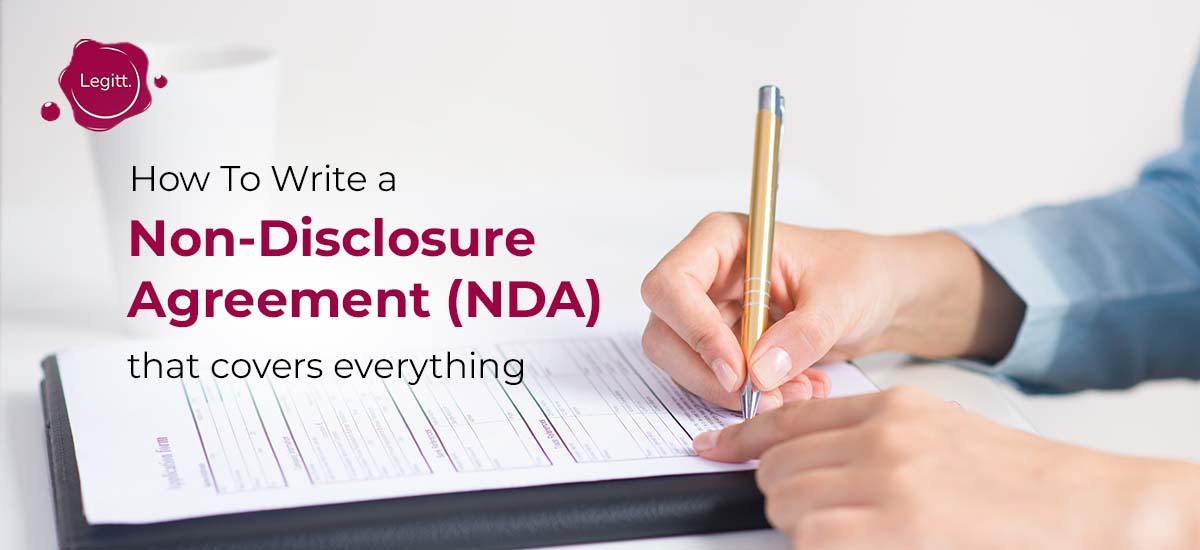Write an NDA
This post elaborates on what all details should a general NDA cover so that you have most of the important areas covered. In the last post we covered in detail about the definition and meaning of a Non-Disclosure Agreement. You can read the post here. This post elaborates on what all details should a general NDA cover so that you have most of the important areas covered.
A general NDA should have the following sections:
- Contact Information of Parties: NDA is a contract between two or more parties. So, it must contain the contact information of the two parties, their representatives signing the contract and their contact details. Even when the NDA is signed between two businesses, the contract is signed between the authorized representatives of the two business entities. This information needs to be added at the start of the contract.
- Details of Confidential Information: Next section is to detail the confidential information that is being shared. This need not have the actual information, but the names of documents and resources that are being shared for access.
- Permitted use of Confidential Information by the Recipient: The confidential information shared under an NDA is always shared for a specific purpose of a specific business engagement. The use of confidential information and restrictions (if any) need to be mentioned in the NDA so that the information is not misused for other purposes than mentioned in the NDA.
- Duration and Time Restrictions for keeping information confidential: Confidential information shared under an NDA is always given access for a certain period of time. This duration and the time restrictions (daily, weekly, monthly etc.) need to be mentioned in the NDA. This will help keeping in check the misuse of information beyond the time duration of the engagement.
- Reason for Disclosure: NDAs are generally signed for specific engagements. Information shared under an NDA is specific to an engagement and must be used only for this engagement only. This reason for sharing the information needs to be mentioned in the NDA so that the information cannot be used for any other engagement.
- Signatures: A contract is a legally binding document. So, it has to be signed by the parties that are entering into the agreement. Have a separate section at the bottom of the document for the representatives of the business entities or the parties entering into the contract. The parties can sign the document digitally or as hard copies.
You can create a great NDA using the sections and details shared in this post. Incase you still need any help, you can use the template for creating a general NDA here.
Besides the General NDA, there are other types of NDAs that businesses sign with other parties. Some of the commonly used NDAs are:
- Employer-Employee NDA. You can read more about NDAs signed between employee and employer here
- NDA signed between a company and a vendor or a service provider. You can read more about NDAs signed between a company and its vendor/service provider here
- NDA signed between a company and a contract worker. You can read more about NDAs signed between a company and its contract workers here
- NDA signed between a company and a client. You can read more about NDAs signed between a company and its client(s) here.
Legitt is a platform where you can create contracts using our templates created by professionals or use AI to help you create agreements and contracts. Then you can automate and create workflows for the contracts and track them as smart contracts on blockchain.

